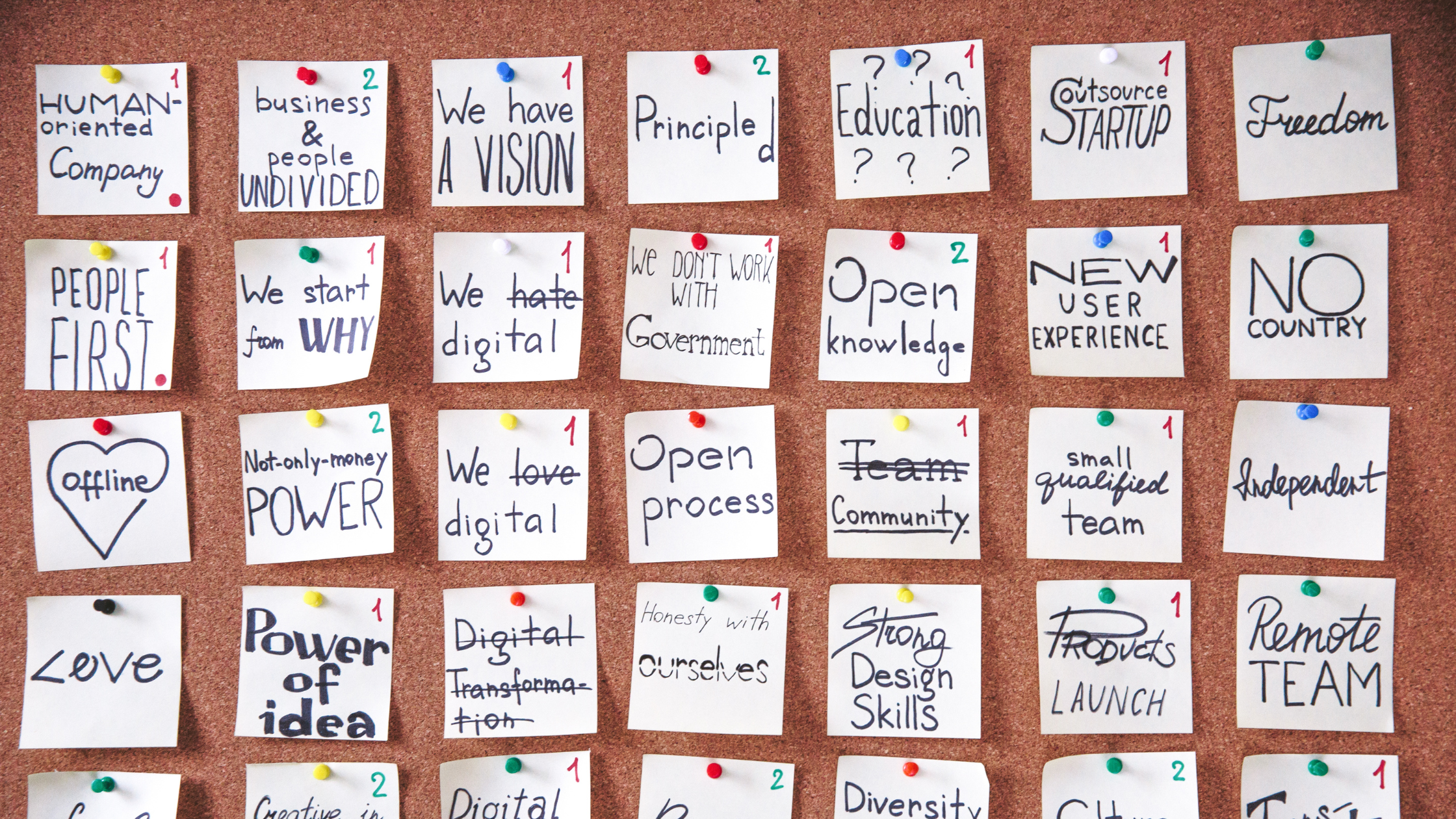Have you ever felt the frustration of setting goals only to see them fade away as the year unfolds? You’re not alone. Traditional goal-setting has its limitations, and that’s because it lacks specificity — where you end up drawing a roadmap without a clear destination. That’s where the magic of visualizing your dreams comes in.
Think about it: when was the last time you imagined your success? Visualizing your dreams is like giving life to your goals. It’s about seeing, feeling, and believing in the possibilities. The power lies in creating a mental picture so vivid that success feels not just achievable but inevitable.
Now, let’s take it a step further. Imagine if you could bring that visualization to life, creating a tangible reminder of your aspirations. Enter vision boards – a great way to turn your dreams into a reality.
Of Vision Boards and Visualization
A vision board is like a creative wish list for your dreams. It’s a visual collage that you make by gathering images, quotes, and symbols representing your goals and aspirations. By putting it all together on a board, you create a powerful visual reminder of what you want to achieve. It’s a fun and tangible way to focus your thoughts on your desires, helping you stay motivated and aligned with your dreams.
I know you’re probably thinking – if these are just images or symbols of what I want to achieve, how does it actually help me fulfill them?
These images serve more than just setting expectations for your goals—they’re potent tools for envisioning your life once those goals are accomplished. And there’s evidence suggesting that visualization is the catalyst that propels you into action, driving you toward the attainment of your objectives.
One study found that people who imagine themselves doing an action gain the strength to do that action. This is because the human body is equipped with a cognitive-motor system wherein our brains and our motor movements work together toward an anticipated or expected act.
“As our actual and simulated muscular movements are the only means that we have to study and learn about the world, our imagined and actual movements and actions allow us to produce the unity of conscious experience. The direct result of this is that cognitive function and intelligence becomes a gage for the effectiveness of consolidating elementary overt or covert movement into more complex patterns of motor activity.”
In simpler terms, the study suggests that our thoughts are like virtual interactions with the world around us. These interactions help us form new memories and create established paths in our brains to process information from our senses and respond with actions or reflexes. Essentially, our thoughts help us learn, move, and navigate the world more efficiently.
Another study also found that students who visualized themselves studying for a test got higher test scores than those who simply envisioned the outcome of acing the test.
Ultimately, visualizing aims to help yourself mentally and physically prepare for your goal-achieving journey. It works by priming and reminding yourself that this is what you have or need to do to get those results.
Visualization vs. Law of Attraction

Visualization and the Law of Attraction are related concepts, but they are not exactly the same.
Visualization is a specific technique where individuals mentally create images or scenes in their minds to represent their desired outcomes or goals. It is a form of mental rehearsal where individuals imagine themselves succeeding, achieving goals, or overcoming challenges. The idea is that by repeatedly visualizing a positive outcome, individuals can enhance their focus, motivation, and confidence, potentially increasing the likelihood of success.
On the other hand, the Law of Attraction is a broader belief system that goes beyond visualization. It suggests that the thoughts and energy a person puts out into the universe will attract similar experiences or circumstances.
Some people are drawn to the Law of Attraction probably because the idea that thoughts can shape reality sounds appealing, as it implies that individuals have the ability to influence their circumstances.
But it’s important to note that while many find the concept inspiring and motivating, the scientific validity of the Law of Attraction is a topic of debate. Some view it as a form of positive psychology and a tool for setting and achieving goals, while others criticize it for lacking empirical evidence.
Steps to Crafting Your Purpose-Driven Vision Board
Regardless of whether you are a proponent of the Law of Attraction, or you prefer scientific studies to validate your ideas, vision boards help your goals come to fruition. But for Vision Boards to have their full effect, they need to be clear and carefully curated.
Here’s how you create your purpose-driven vision board.
Look Back on Your Values and Passions
Before diving into images and words, take a moment to reflect on what truly matters to you. Identify your core values and passions. What brings you joy, fulfillment, and a sense of purpose? Understanding these elements will guide your vision board’s overarching theme.
Set Clear Intentions for the Year Ahead
Define specific goals and intentions for the upcoming year. Whether it’s personal growth, career milestones, or health objectives, be clear about what you want to achieve. These intentions will serve as the foundation for the elements you’ll include on your vision board.
Curate Images, Words, and Symbols

Begin the creative process by collecting images, words, and symbols that resonate with your identified values and intentions. These can be sourced from magazines, the internet, or even personal photographs and handwritten affirmations. Choose visuals that evoke strong positive emotions.
Organize and Arrange for Maximum Impact
Arrange your selected elements in a way that visually appeals to you. Consider the flow and balance of the board. Group related images and words to create a cohesive narrative. The layout should tell a story of your envisioned journey, making it easy for your mind to connect the dots.
DIY vs. Digital: Choose Your Medium
Decide whether you prefer a physical, tangible board or a digital version. DIY vision boards can be hands-on and tactile, while digital boards offer convenience and easy sharing. Go with the medium that aligns with your personal style, preference, lifestyle, and accessibility.
Incorporate Your Vision Board into Your Daily Routine
The power of a vision board lies in regular exposure. Find a prominent place for your board where you’ll see it daily—perhaps by your bedside or workspace. Take a few moments each day to engage with the visuals, reinforcing your commitment to your goals.
Share Your Vision: The Benefits of Accountability
Consider sharing your vision board and aspirations with a trusted friend, family member, or personal coach. Accountability can boost motivation and provide valuable support. Discussing your vision with others also solidifies your commitment to the goals represented on your board.
Bringing Your Vision Board to Life

A well-thought-out plan is key to visualizing the kind of life you wish to achieve. But more than the goals itself, it’s also important that you enjoy the journey. It’s in those seemingly ordinary moments that we learn, grow, and uncover the true meaning behind our goals. The twists and turns, the highs and lows – they all contribute to a richer, more fulfilling experience. When we focus on the journey, we infuse intention into every action, making our goals not just destinations but meaningful milestones in a purposeful life.
So start crafting your vision board today. Let this be the day you declare your intentions to take that first step towards a purpose-driven life. The act of creating your board is a powerful commitment to your journey, a tangible reminder that your dreams are worth pursuing.
Embrace the journey, infuse it with purpose, and let your vision board be the guiding star lighting up your way. The adventure begins with that first cut, that first paste – it’s a journey of a thousand purposeful steps, and it all starts with you, a vision, and the courage to begin. Happy crafting!
Did you enjoy this article? You might also enjoy:
The Art of Reflective Leadership: A Year-End Review
Small Habits, Big Results: How Positive Habits Help Achieve Your Goals
Inclusive Leadership: Fostering Diversity and Inspiring a Culture of Belonging


